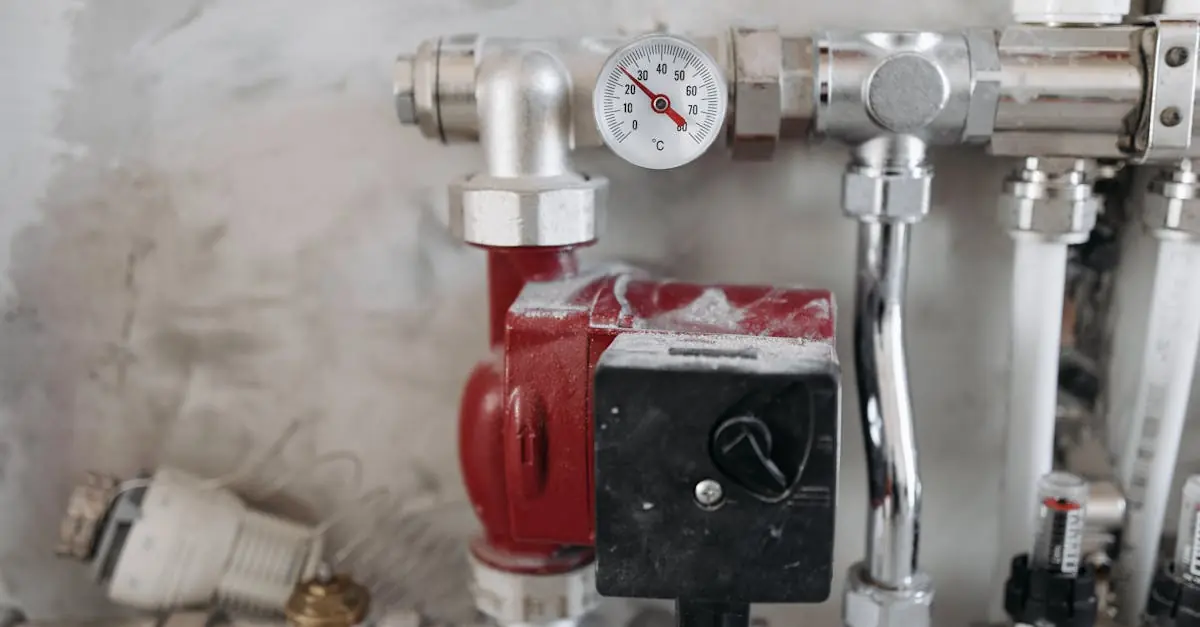When was the last time your HVAC system got a little TLC? If you can’t remember, it might be time for a maintenance check. Just like a car needs regular oil changes to keep running smoothly, your heating and cooling system craves attention to avoid costly breakdowns. Think of it as giving your HVAC a spa day—only instead of cucumbers on the eyes, it gets clean filters and tightened bolts.
An HVAC maintenance checklist is your trusty sidekick in this quest for comfort. It helps keep your system in tip-top shape, ensuring you stay cozy in winter and cool in summer. Plus, who doesn’t want to impress their friends with a home that’s always the perfect temperature? So buckle up and get ready to dive into the essential steps that’ll keep your HVAC humming like a well-tuned symphony.
Table of Contents
ToggleImportance Of HVAC Maintenance
Regular HVAC maintenance ensures the system operates efficiently and reliably. A proactive approach can reduce unexpected repairs and extend the unit’s lifespan.
Benefits Of Regular Maintenance
Routine maintenance enhances indoor air quality and comfort. It prevents issues like mold growth and allergens from circulating in the air. Regular check-ups increase system reliability, minimizing the risk of inconvenient breakdowns. Additionally, a well-maintained HVAC system operates quietly and maintains consistent temperatures. Savings on repairs and replacements also contribute to the overall affordability of home comfort.
Impact On Energy Efficiency
Energy efficiency improves significantly with regular HVAC maintenance. A clean and well-tuned system consumes less energy, resulting in lower utility bills. Dust buildup and worn components can hinder performance, making systems work harder and consuming more energy. Regular inspections can identify and resolve minor issues before they escalate into major inefficiencies. Enhanced energy efficiency not only benefits homeowners with savings but also promotes a more sustainable environment by reducing energy consumption.
Key Components Of An HVAC Maintenance Checklist
An effective HVAC maintenance checklist includes specific tasks for each system component. Regular attention to these areas ensures optimal performance and longevity.
Indoor Unit Maintenance
Indoor unit maintenance focuses on several essential tasks. Checking and replacing filters every month keeps the system clean and improves airflow. Inspecting the evaporator coil for dirt buildup prevents efficiency losses. Ensuring proper condensate drainage avoids water damage and mold growth. Testing the thermostat guarantees accurate temperature readings. Cleaning the blower fan and inspecting electrical connections enhance system reliability. Each step contributes significantly to maintaining a comfortable indoor climate.
Outdoor Unit Maintenance
Outdoor unit maintenance plays a crucial role in HVAC efficiency. Cleaning the condenser coils at least twice a year removes debris that can obstruct airflow. Trimming vegetation around the outdoor unit prevents obstruction and enhances airflow. Inspecting refrigerant levels ensures the system operates within the manufacturer’s specifications. Checking the unit’s insulation protects against energy loss. Regularly testing the compressor prevents performance issues. These practices extend the lifespan of the outdoor unit and improve overall system efficiency.
Ductwork Inspection
Ductwork inspection is vital for maintaining indoor air quality and system efficiency. Inspecting ducts for leaks ensures that conditioned air reaches intended spaces without loss. Sealing any gaps improves system performance and reduces energy costs. Cleaning ducts removes dust and allergens, promoting healthier air quality. Evaluating duct insulation protects against temperature loss in conditioned air. Regular inspections maintain system efficiency and contribute to a more comfortable living environment.
Monthly Maintenance Tasks
Regular monthly maintenance tasks contribute significantly to the overall performance of HVAC systems. These tasks ensure systems operate efficiently and help prevent costly repairs down the line.
Filter Replacement
Replace air filters every month to maintain optimal airflow. Clogged filters can restrict air circulation, forcing the system to work harder, which leads to increased energy bills. Choose filters with a high Minimum Efficiency Reporting Value (MERV) rating for better filtration. This action improves indoor air quality by reducing dust, allergens, and other particulates. Each filter type, including pleated, fiberglass, or washable, affects efficiency differently, so select according to specific needs. Keep track of filter replacement dates to establish a routine. This simple task often becomes overlooked but plays a critical role in system longevity and indoor comfort.
Thermostat Settings
Check thermostat settings monthly to ensure accuracy and efficiency. Programmable thermostats allow for temperature adjustments that accommodate different times of the day, optimizing energy use. Adjust settings based on seasonal changes, keeping in mind the recommended temperature range for heating and cooling. An ideal range for summer is 75°F for cooling and 68°F for heating in winter. Calibrate the thermostat regularly to prevent discrepancies and potential strain on the HVAC system. Consider upgrading to a smart thermostat, as this option provides energy usage reports and remote control benefits. Evaluate these settings to maintain comfort and reduce energy consumption effectively.
Seasonal Maintenance Tasks
Seasonal maintenance is crucial for HVAC systems, with specific tasks tailored to each season.
Spring and Summer Checks
Inspecting the condenser unit is vital during warmer months. Cleaning debris from around the unit enhances airflow and cooling efficiency. Checking refrigerant levels ensures optimal performance and prevents system strain. Adjustments to thermostat settings based on temperature changes help maintain comfort. The air filter should be replaced monthly to keep dust and allergens in check, supporting indoor air quality. Cleaning the evaporator coils also maximizes energy efficiency.
Fall and Winter Checks
During the colder months, focus shifts to the heating system. Testing the thermostat for accuracy guarantees consistent temperatures throughout the home. Inspecting and cleaning the furnace ensures smooth operation before winter sets in. Checking for any blocked vents promotes efficient airflow and heating efficiency. Sealing leaks in ductwork prevents heat loss and enhances comfort. Replacing air filters monthly continues to support quality air circulation and reduces strain on the system.
Conclusion
Regular HVAC maintenance is essential for ensuring a comfortable and healthy indoor environment. By following a comprehensive checklist, homeowners can significantly enhance the efficiency and reliability of their systems. This proactive approach not only reduces the likelihood of unexpected breakdowns but also promotes better air quality and energy savings.
Incorporating seasonal and monthly tasks into routine maintenance can lead to long-term benefits. A well-maintained HVAC system operates more quietly and consistently, providing peace of mind. Staying diligent with maintenance tasks ultimately results in a more sustainable home, reducing both environmental impact and utility costs. Prioritizing HVAC care will pay off in comfort and efficiency for years to come.



